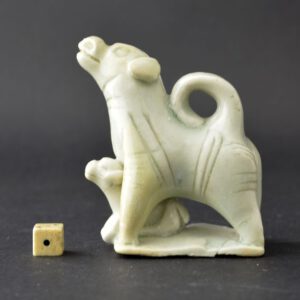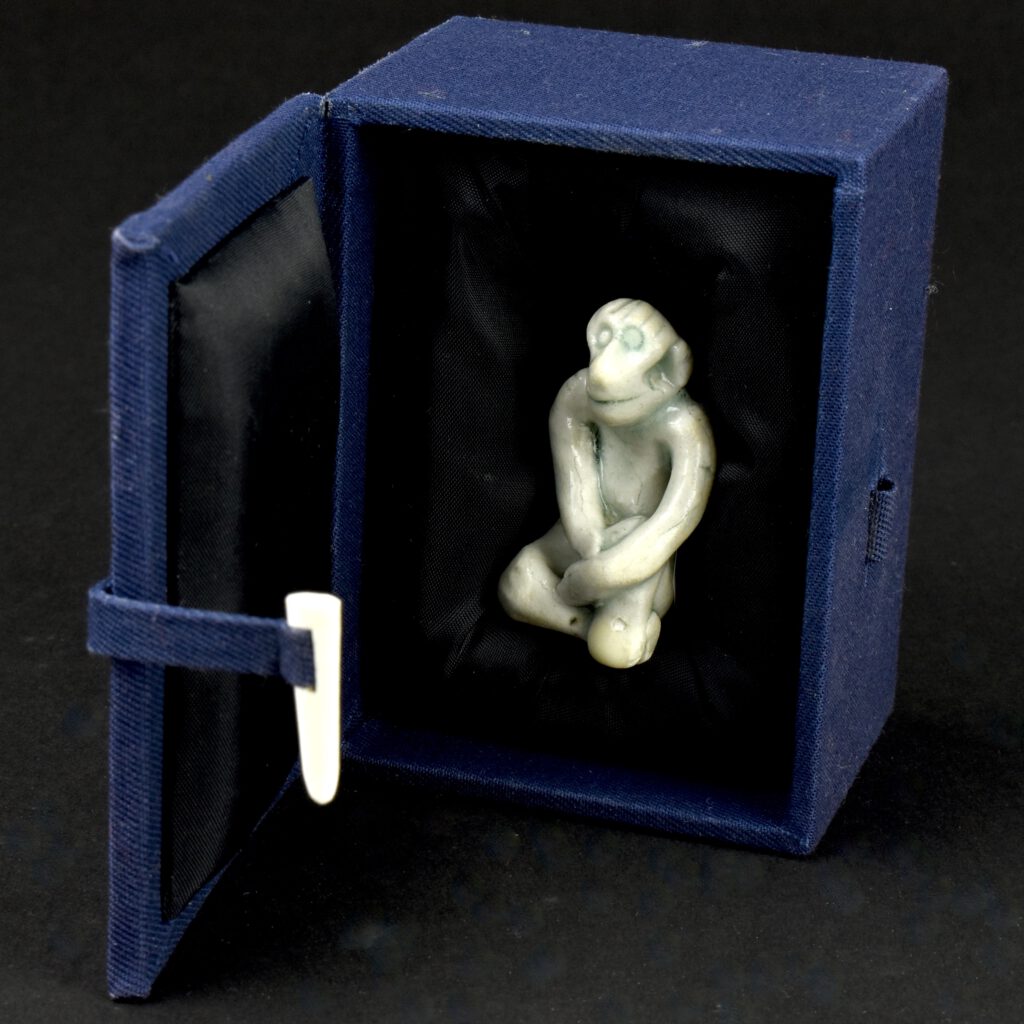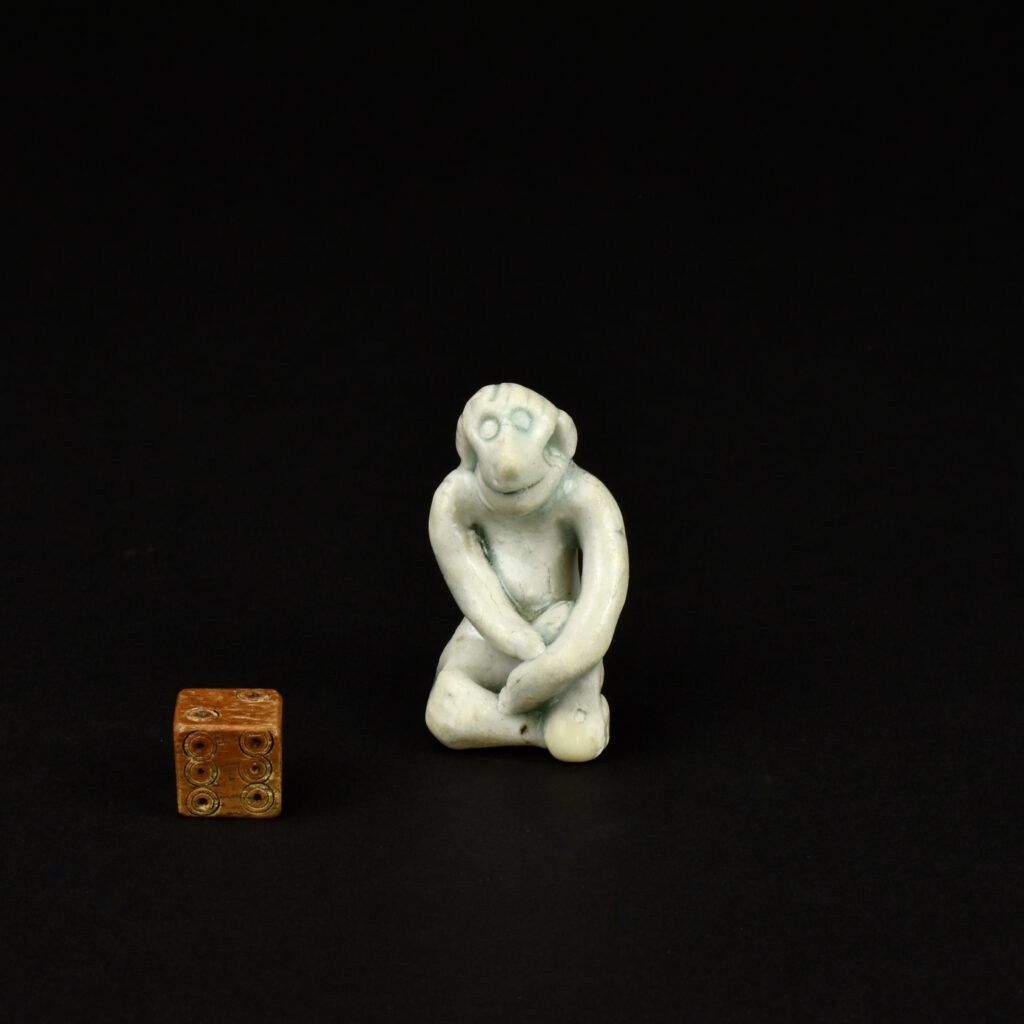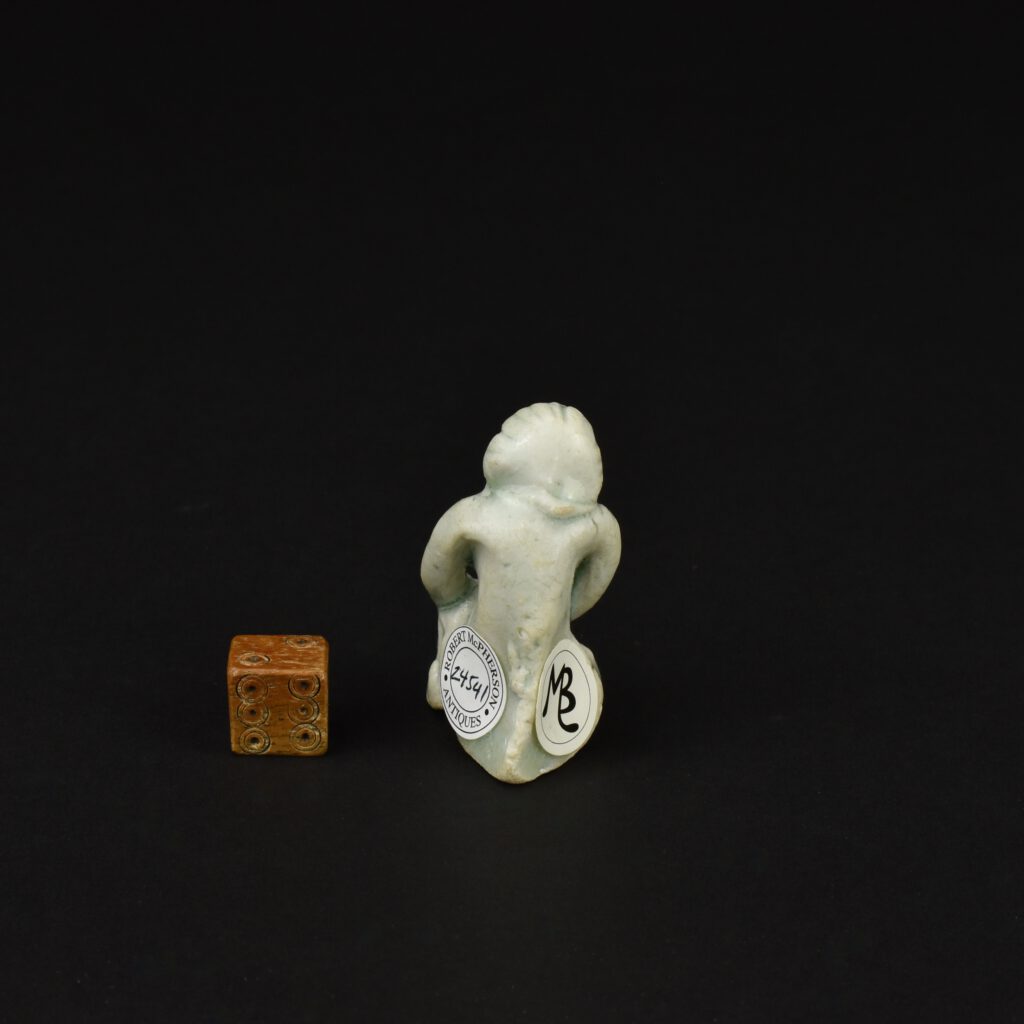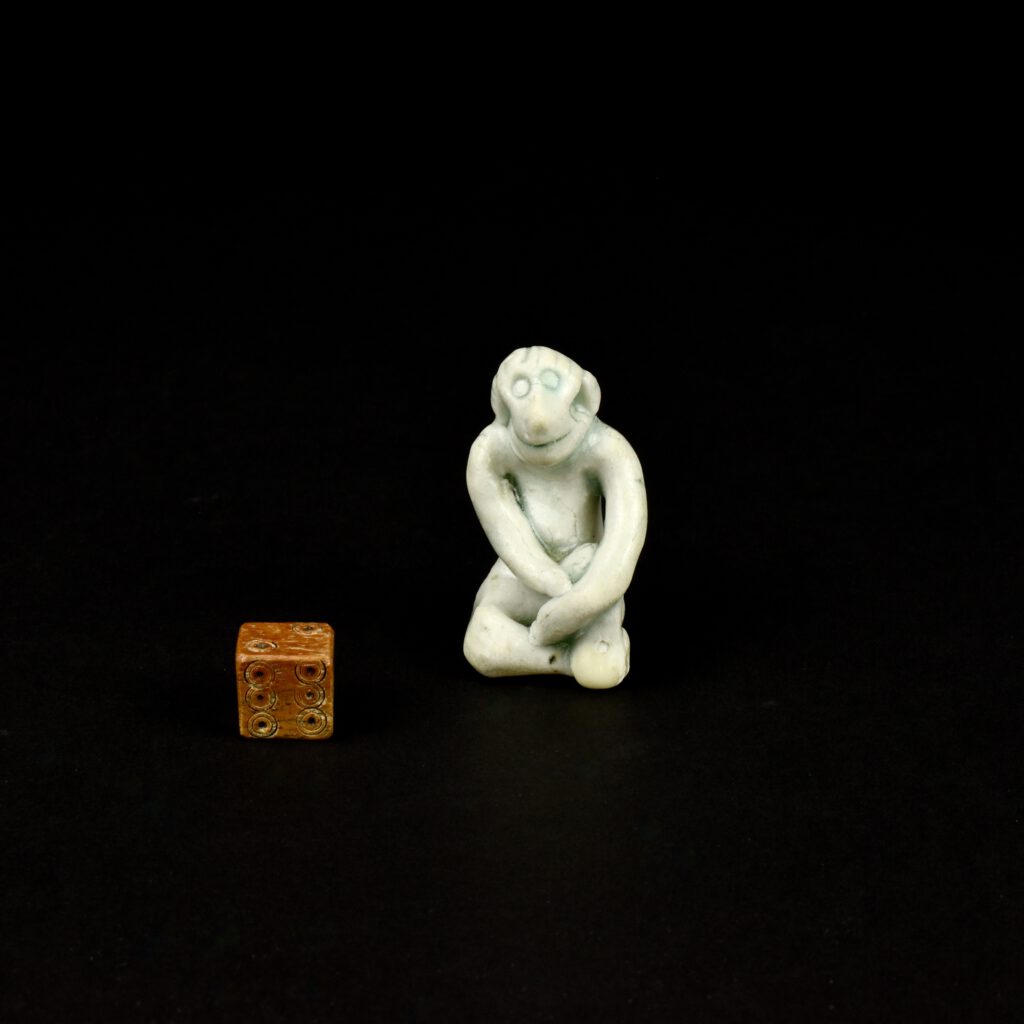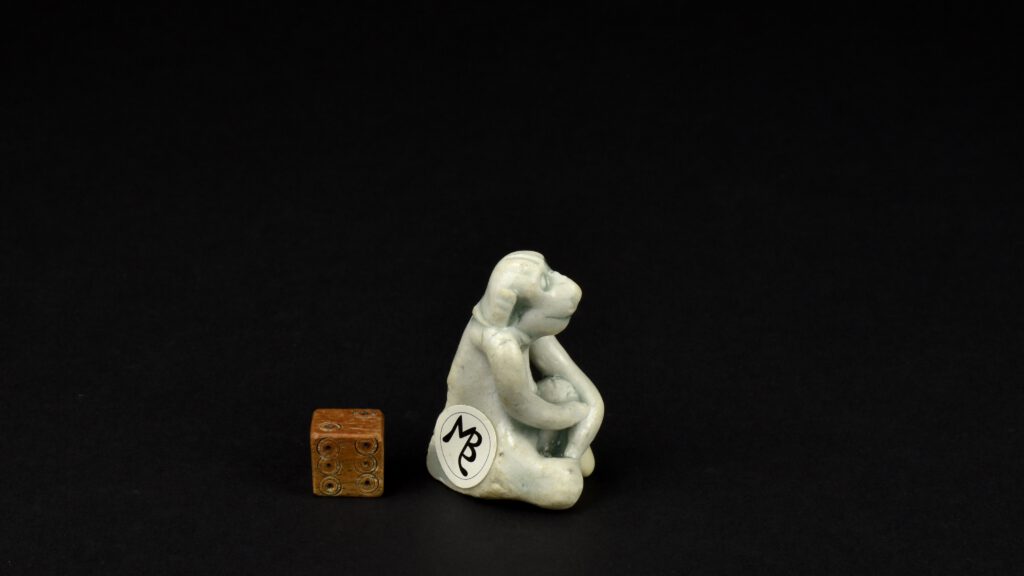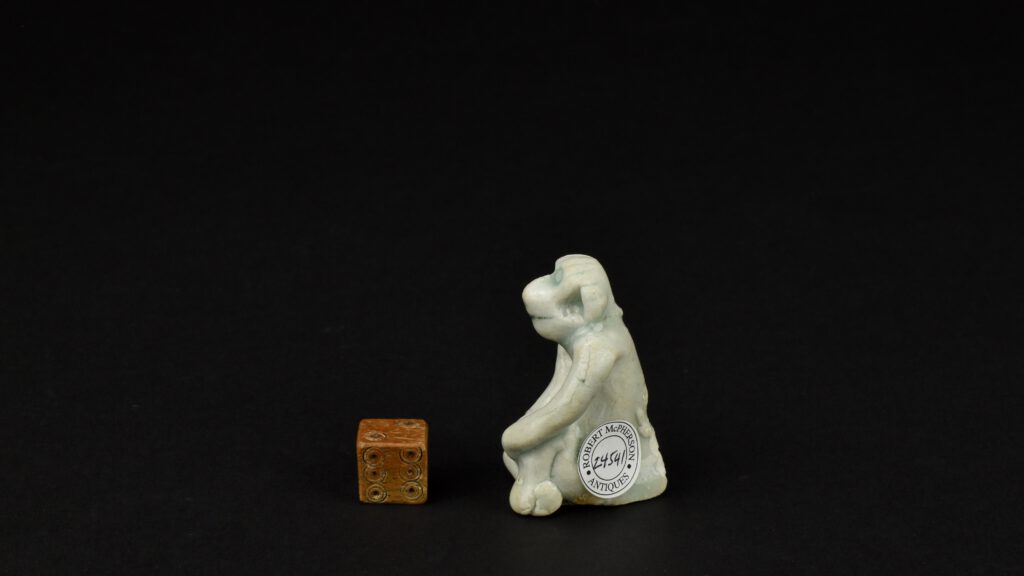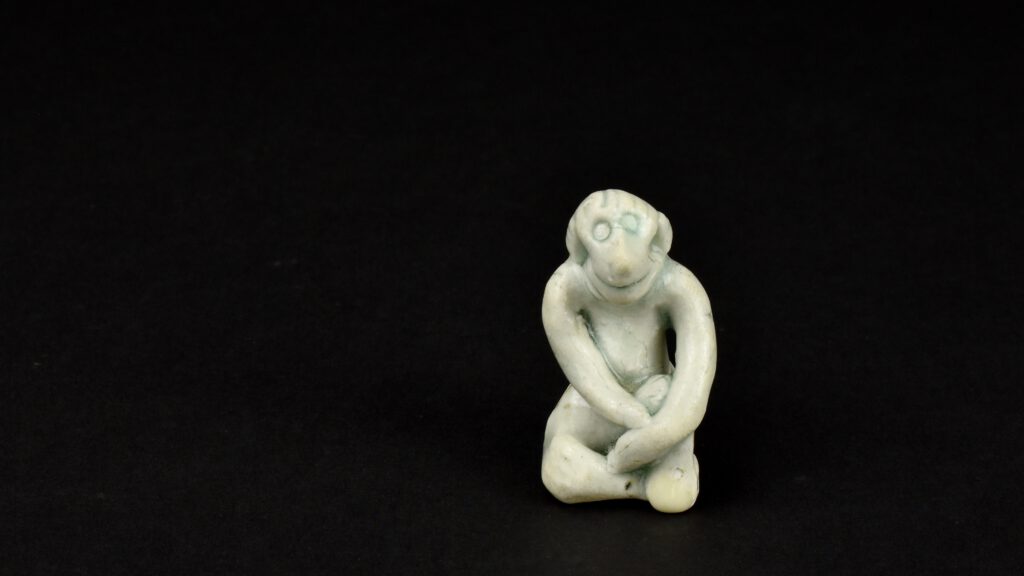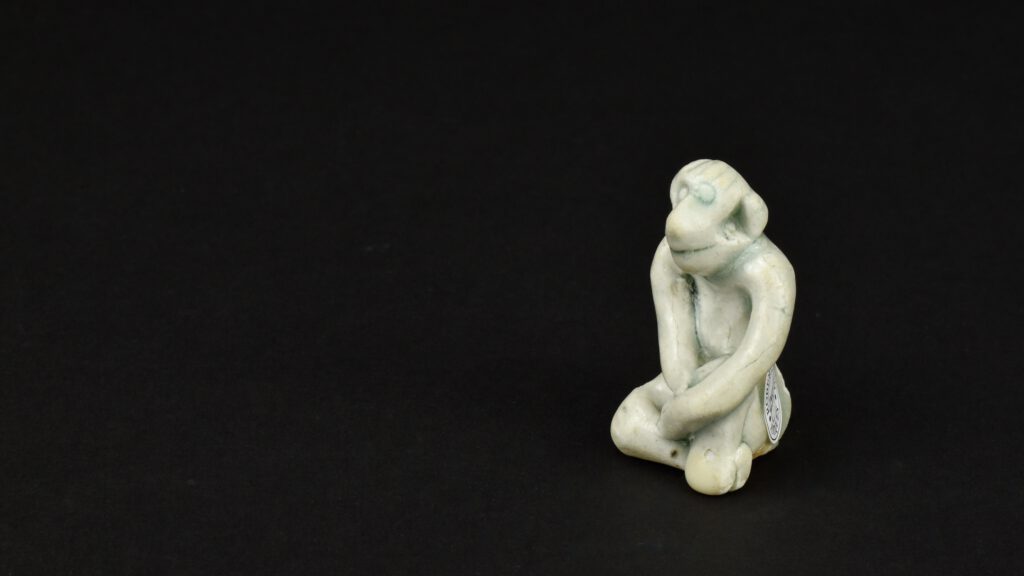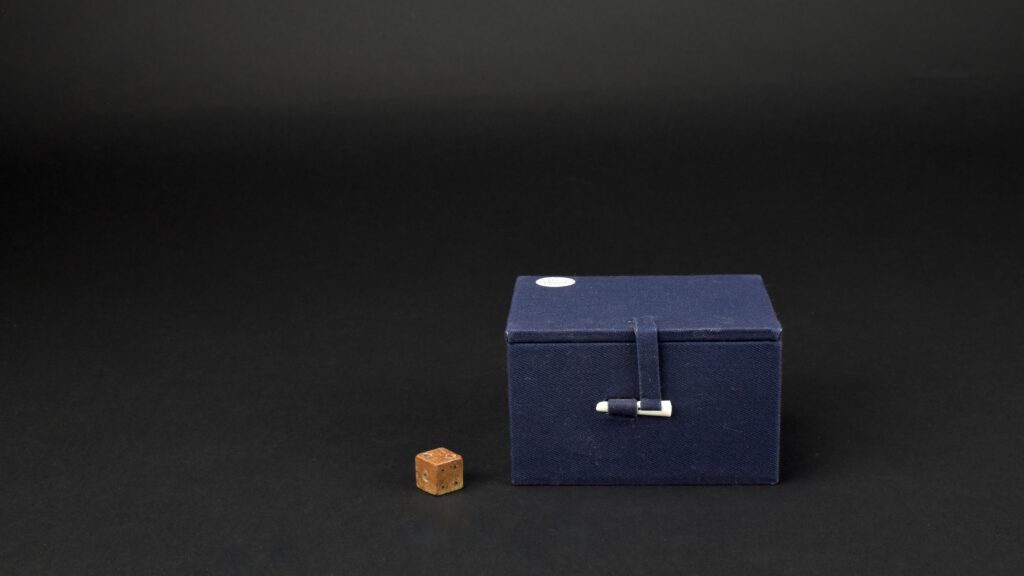
A Song Qingbai Porcelain Model of a Seated Monkey
A Rare Hand-Modelled Song Dynasty Qingbai Porcelain Monkey, Jingdezhen Kilns, 12th or 13th century. This Song dynasty hand-made Qingbai porcelain model of a monkey has incised lines indicating hair, the circular eyes are made by indentions using a small tool.
See Below For More Photographs and References.
SOLD
- Condition
- In good condition, a small shallow chip filled on the monkies left knee small, glaze chips to the ridge at the back.
- Size
- Height : 4.6 cm ( 1 3/4 inches).
- Provenance
- K.Y. Ng, Hong Kong 2004. From the collection of early Chinese ceramics belonging to Professor Gordon Michael Besser FRCP FMedSci (born 22 January 1936) is a British medical doctor. He is emeritus Professor of Medicine at St Bartholomew's Hospital, London, and an expert of endocrinology and diabetes.
- Stock number
- 24541
- References
- For a related Song Qingbai model of a seated dog see : Small China, Early Chinese Miniatures : a rediscovery of a cultural phenomenon (Koos de Jong, Arnoldsche Art Publishers. ISBN 978-3-89790-631-0. 2021) Page 234, fig.235 and for a model of a seated monkey, Cizhou moulded pottery, page 118, fig. 96.
Information
Qingbai Porcelain
The earliest known qingbai wares were produced in Jingdezhen in Jiangxi province around the late 10th century and are characterized by faint pale-blue glazes on low, wide forms. Qingbai continued to be enormously popular and highly produced throughout the Song dynasty (960-1279) and was prevalent in the Yuan dynasty (1279-1368), but slackened during the Ming dynasty (1368-1644) until being replaced by tianbai, ‘sweet white’ ware. The initial forms of qingbai were simple bowls and dishes, but by the mid-Northern Song the forms had advanced to include a wide variety of objects used for daily life such as ewers, boxes, incense burners, granary models, vases, jars, sculptures, cups, cupstands, water droppers, lamps, grave wares, and tools for writing and painting. The precedent for the majority of these forms is found in earlier metalwork and lacquer and Rawson has suggested that the imitation of silver was the primary force behind the production of white wares, including qingbai.
Professor Gordon Michael Besser

A Song Qingbai Porcelain Hand-Moulded Dog and Pup.
Robert McPherson Antiques
Sold Archive 24542
